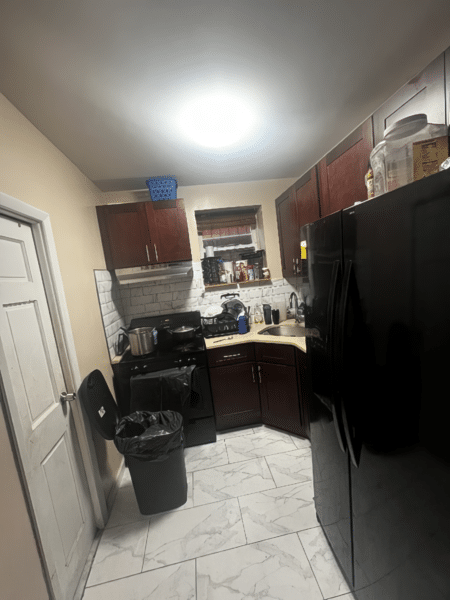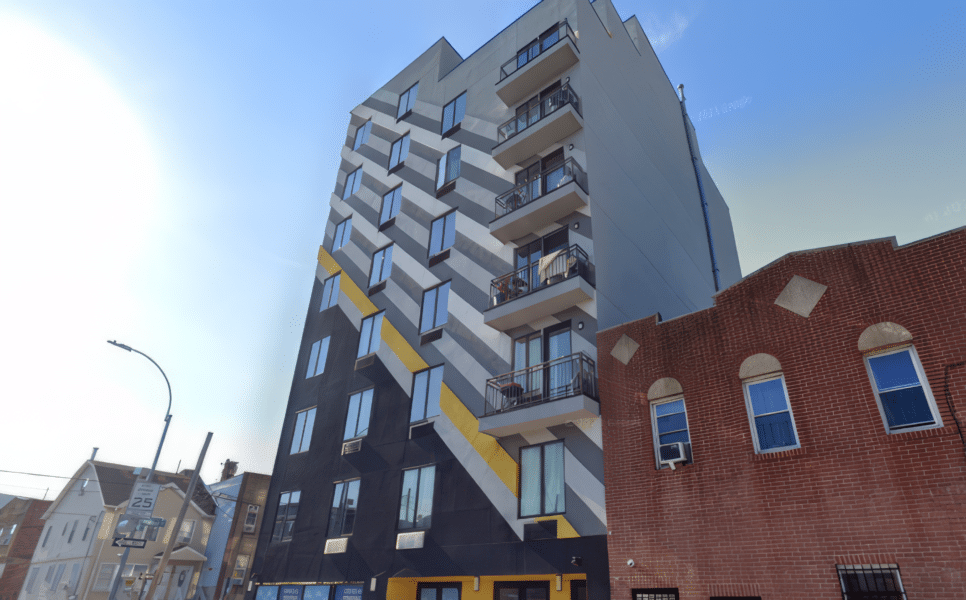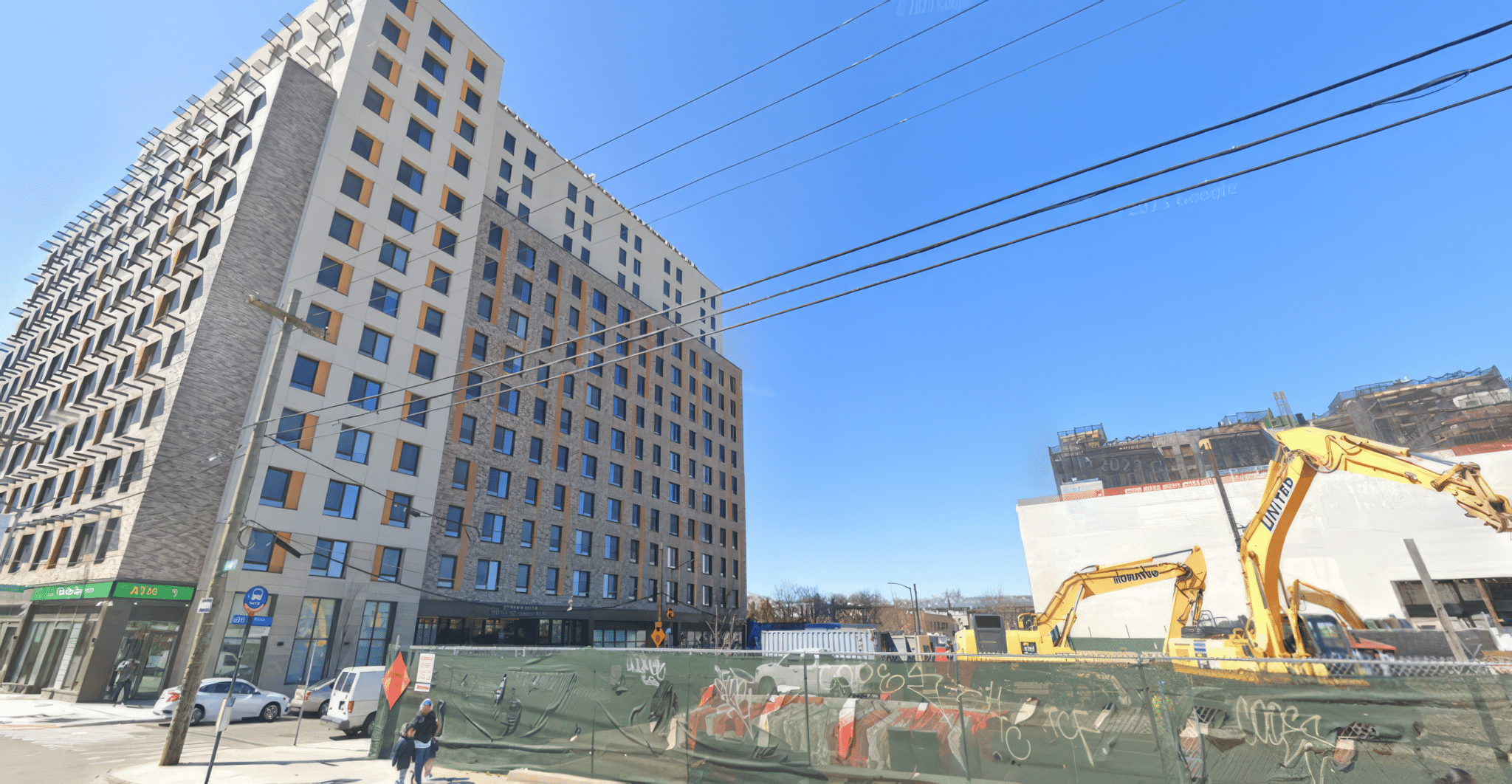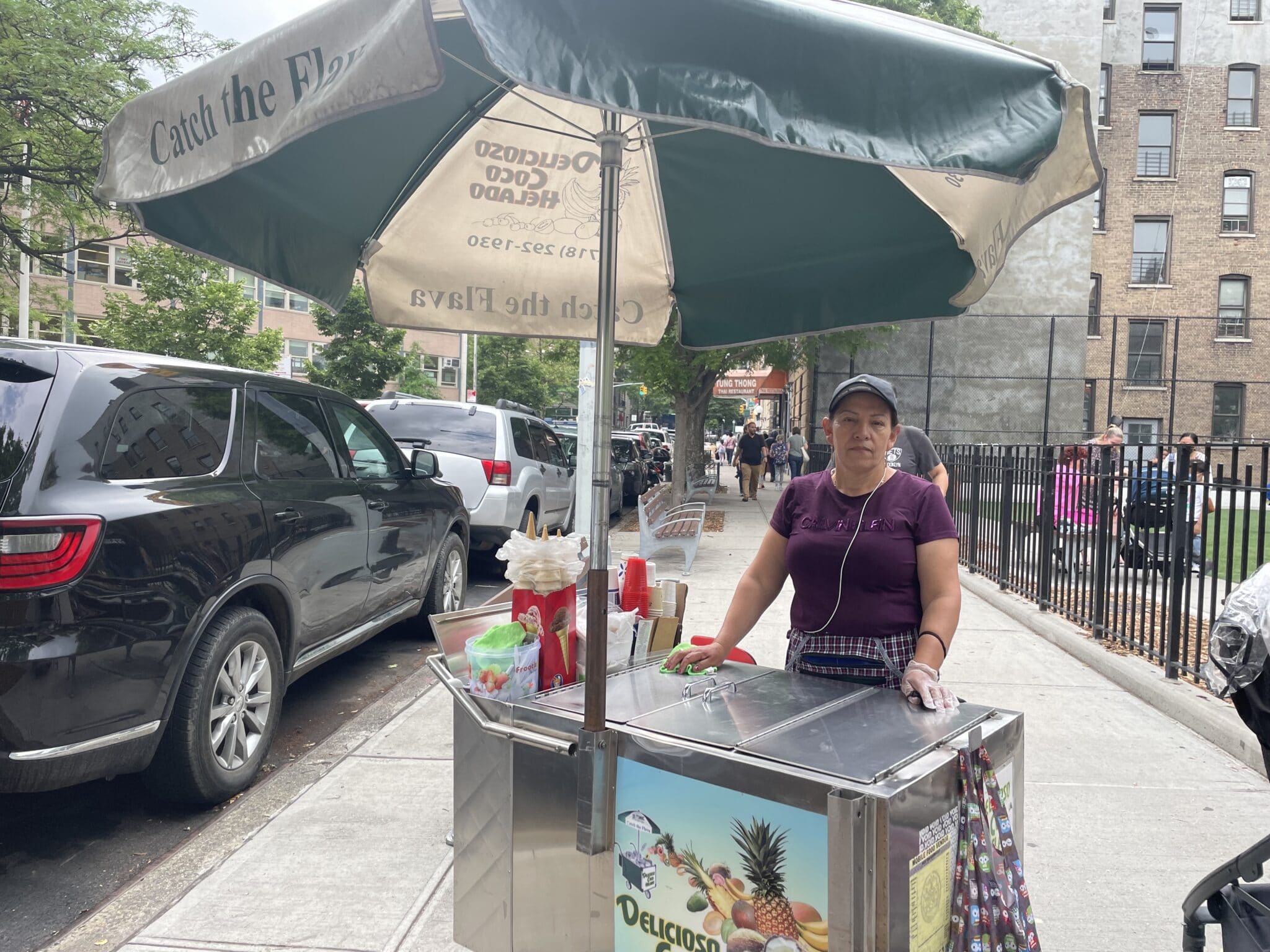New buildings are going up in East New York and the rents are rising. Photo by Josue Rodriguez.
BROOKLYN, New York – William Jimenez and his four children worry that they may be forced to move. They came to New York from the Dominican Republic seeking a better life three years ago. The family felt lucky when they moved into their three-bedroom apartment in East New York. But now, their landlord plans to raise the rent by $1,500.”It’s just not possible,” Jimenez said. “I’m a single father, and I work two jobs. I don’t know what I’m going to do.”

The kitchen in the Jimenez apartment. Photo by Josue Rodriguez.
Jimenez is not alone. Rent prices in Brooklyn have been skyrocketing in recent years, making it increasingly difficult for people to afford to live in the borough. According to a recent report by StreetEasy, the median rent for a one-bedroom apartment in Brooklyn is $4,350, up 14% from 2022.
The latest findings from the Community Service Society of New York’s (CSS) annual Unheard Third survey highlight ongoing concerns many New York City tenants have about housing affordability rising rents and the lack of stronger protections against evictions leave tenants vulnerable. For nearly 378,000 of the city’s market rate tenants with household incomes under $50,000, rent increases could lead to eviction and potentially homelessness.
Overall, 59 percent of the city’s market-rate tenants saw their rents increase in 2022, and none saw their rents fall. That is a 37-point jump from 2021.Many factors drive the rent increases. There’s strong demand for housing in Brooklyn and a short supply of affordable rentals. New buildings with new tenants push the market higher. As a result, many people feel forced to move to more affordable neighborhoods or out of the borough altogether.
“Skyrocketing rents across the city promote instability in neighborhoods and add to the burdens already acutely felt by low-income New Yorkers struggling to make ends meet and get their financial footing in the pandemic-era economy,” David R. Jones, President and CEO of CSS said on its website.

New neighbors are moving in to modern high rises in East New York. Photo by Josue Rodriguez.
“It’s a crisis,” said Susan Needleman, a housing advocate with the Pratt Center for Community Development. “People are being priced out of their homes, and they don’t have anywhere else to go.” The rent increases have a particularly devastating impact on low-income families like the Jimenez’s.
“I don’t know what I’m going to do if we have to move,” Jimenez said. “I don’t know where we’re going to go.”
The city is taking some steps to address the housing crisis. It plans to build more affordable housing units and provide rental assistance to low-income families. But the crisis is immediate for people like Jimenez and his family who want to stay in their homes.Jimenez is considering moving his family to Queens or Staten Island if he can find something cheaper, but he worries about the impact that a move would have on his children.
“My kids love their school and their friends,” Jimenez said. “I don’t want to change that for them. But I don’t know what else to do.”
Jimenez’s landlord Abdul Muhammad lives on Logan Street and owns several buildings in East New York. He is sympathetic but says he’s unable to keep rents affordable.
“I understand that a $1,500 rent increase is a lot, but I need to cover my rising costs. I have made significant improvements to the property since they moved in, like new landscaping, roof, cabinets, flooring, HVAC system, appliances, and the increase is fair,” Muhammad said.
Tenants in other buildings hope their landlords understand their reality. Maria Sanchez, a 65-year-old retiree, has lived in her two-bedroom apartment in the same building in East New York for over 30 years. But now, she faces the possibility of being forced to move because her landlord is raising the rent by $1,000. That will bring it to $3,900 a month.
“I’m on a fixed income,” said Sanchez. “I already have to be very careful with my money. I don’t know how I’m going to pay the new rent.” Sanchez has tried to find other apartments in the area but hasn’t found anything affordable. She is worried about what she will do if she is forced to move out of her home.
In September 2023, Mayor Adams of New York announced a plan to address the city’s persistent housing shortage and affordability crisis. This initiative, named the “City of Yes for Housing Opportunity,” would involve significant zoning changes, the promotion of shared living spaces, encouragement of transit-oriented development, and legalization of garage conversions or other small buildings on lots with bigger buildings. The goal is to create an additional 100,000 homes over the next 15 years. But it’s not likely that the plan will become a reality before 2025.
Tags: Abdul Muhammad Adams Affordable Housing Community Service Society CSS David R Jones East New York East New York Brooklyn Josue Rodriguez landlords Mayor Adams Affordable Housing Pratt Center for Community Development Susan Needleman tenants William Jimenez
Series: Community






